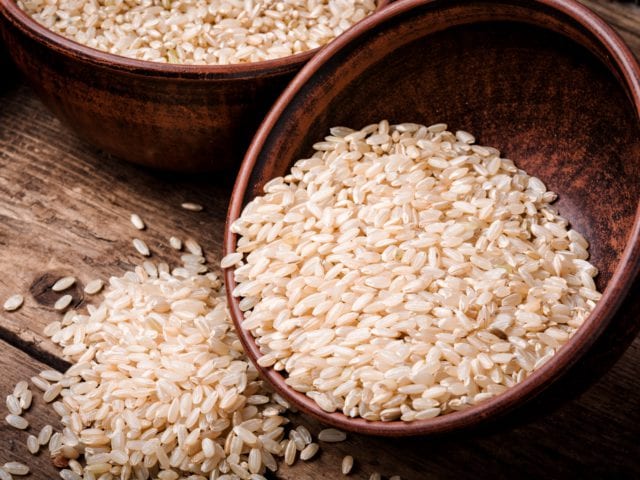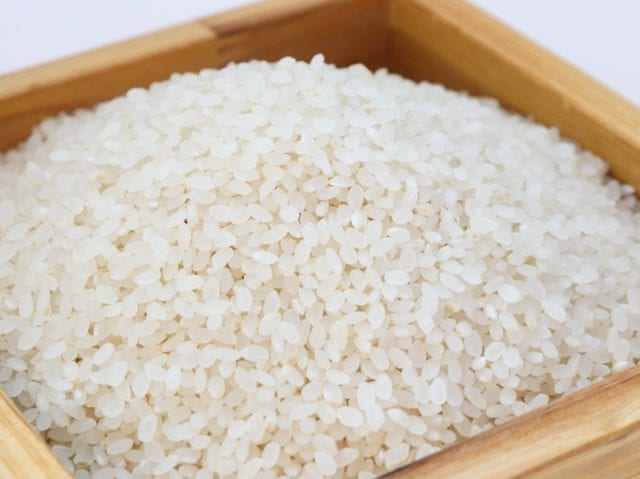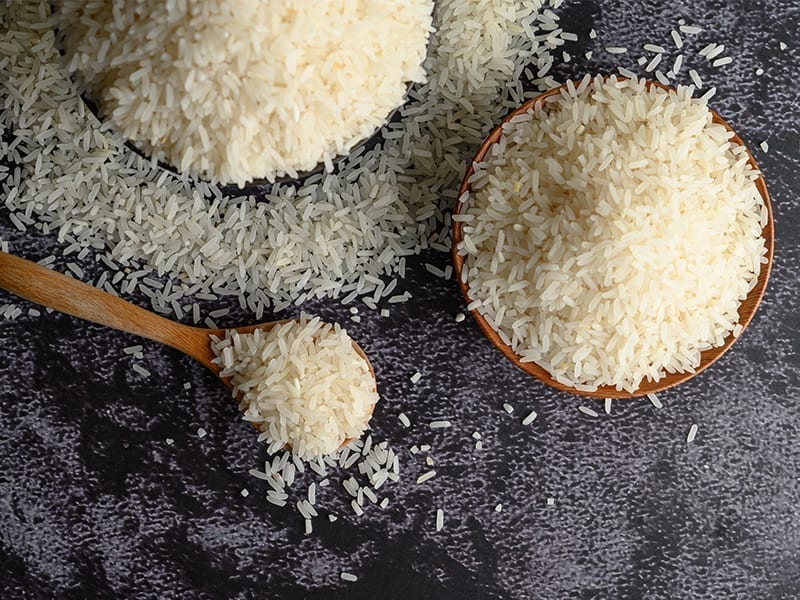Lunch or dinner, rice makes an appearance in every Indian meal. This diet staple is used all over India and is an indispensable part of the Indian cuisine. Of the many varieties, white rice is by far the most popular one. Basmati rice, brown rice, and parboiled rice are some of the other varieties of rice consumed widely in the country. One of the popular aromatic long-grained rice with soft and sticky flavor, Jasmine rice, is a delight for the taste buds! Black rice, indigenous to the north-east of India, has a nutty flavour and is quickly catching up with the others in terms of popularity.
When it comes to everyday consumption, brown and white are the most popular options. Here is an overview of both the types of rice along with a comparison between brown rice nutrition and white rice nutrition to help you make the right choice for your health.
How Does Brown Rice Differ From White Rice?
Brown rice is a whole grain. Whole grain means it contains the nutritious bran or outer husk that is rich in fibre, antioxidants, and vitamins. It also has the edible germ; that is rich in vitamins, minerals, and proteins, with carbohydrate-rich endosperm (rice kernel). The glycemic index (GI) index of brown rice is low as 50. The proportion of carbs in brown rice is lower than that in white rice.
White rice has higher carbs and fats, thus having a higher (GI). The GI index of white rice is 89. The white endosperm of the white rice is easily metabolised, increasing the blood glucose level leading to high insulin secretion.
Report Card – Brown Rice Nutrition v/s White Rice Nutrition
Nutritional differences among brown and white rice can be estimated by analysing the values in between 1 cup of brown rice calories (about 202 g) with that of 1 cup of white rice calories (about 186 g).
| Properties | Brown Rice | White Rice |
| Calories | 248 kcal | 242 kcal |
| Protein | 5.5 g | 4.3 g |
| Fat | 1.9 g | 0.4 g |
| Carbohydrate | 52 g | 53 g |
| Fibre | 3.2 g | 0.6 g |
| Sodium | 8.1 mg | 1.6 mg |
| Niacin | 5.2 mg | 3.4 mg |
| Total Folate | 18.2 µg | 108 µg |
| Thiamine | 0.4 mg | 0.3 mg |
| Manganese | 2 mg | 0.7 mg |
| Vitamin B6 | 0.2 mg | 0.09 mg |
| Magnesium | 78.8 mg | 24.2 mg |
| Phosphorus | 208 mg | 68.8 mg |
| Iron | 1.2 mg | 2.8 mg |
| Calcium | 6 mg | 5.5 mg |
| Potassium | 174 mg | 53.9 mg |
| Zinc | 1.4 mg | 0.8 mg |
So who is the kitchen boss – Brown rice or white rice?
The consumption of each type of rice affects the body in different ways. Both types come with different sets of benefits. Here are some facts about them and their benefits.
Brown Rice Nutrition

- It has higher amounts of fibre; which increases gut microflora by acting as prebiotics. It contains mainly two types of fibre, soluble and insoluble ones. The soluble fibre can be broken down by the body, thus brown rice benefits the body in terms of controlling blood glucose levels and cholesterol levels. The insoluble fibre helps to make a roughage by cleaning up the digestive tract. The proportion of carbs in brown rice is lower than white rice which also aids the same.
- The other brown rice benefits include relief from diarrhoea (it helps in absorbing more water in the body). Vitamin E contained is required for blood coagulation and thwarting skin diseases. The manganese content of brown rice can serve about 88% of our daily requirements. It is supposed to increase satiety; making one more fuller as it takes time to digest.
- It contains low folate, which is essential for a developing fetus in pregnant women. The higher phosphorus and potassium content in brown rice limits its use in people with kidney diseases.
Brown Rice Nutrition Facts
- Brown rice is rich in lignans. Lignans are plant derivatives that help in decreasing blood pressure and adipose deposition in blood. This helps to prevent heart disorders, atherosclerosis development in arteries. Thus, brown rice benefits are immense for people trying to maintain their health.
- It contains ‘antinutrients’. Antinutrients are plant compounds that deplete our body’s capability to absorb essential nutrients. They achieve these by combining beneficial minerals having a stronger affinity than other body products. The chief antinutrient in brown rice is phytic acid or phytate. Phytate may bind with zinc and iron and form insoluble compounds that cannot be absorbed by our body, thereby causing deficiency of these minerals.
White Rice Nutrition

- It contains the vital ingredient, i.e. calcium, which is higher than brown rice and is essential for bone and muscle development. White rice calories are quite similar to brown rice.
- Carbs in white rice containing micronutrients is a great carbohydrate choice to replenish depleted muscle glycogen stores of athletes after extreme workouts or training, meeting recommendations of sports nutrition.
White Rice Nutrition Facts
- White rice calories: The proportion of calories is high in white rice which may be linked with increased risk of diabetes and heart diseases for those working out less than 4 days a week or sedentary persons.
- It also contains a higher proportion of folates.
Who Is The Winner, White Or Brown?
Both types have advantages over others, but nothing to indicate a huge difference in taking any of the types in regards to our health, if not under medication for any health condition. For average healthy men or women, brown rice seems to be a more healthful option at a moderate quantity.
Also, due to the possible accumulation of arsenic in bran, it is more likely to occur arsenic in brown rice, which may accumulate in the body over time and lead to cancer of the urinary bladder or even lungs. Thus better to avoid brown rice during pregnancy and children below the age of 6. However, the differences between brown rice benefits and side effects are marginal.
FAQs – Frequently Asked Questions
Q. Are white rice and brown rice obtained from different sources of paddy?
A. No, due to a difference in processing steps; the final product can be brown rice or white rice.
Q. What is the basic difference between brown rice and white rice?
A. They are basically the same. Brown rice is the whole grain, and in addition to the inner core of white rice kernel, it also has nutrient-rich bran and germ.
Q. Do any of these types of rice contain gluten?
A. No, both brown and white are naturally gluten-free.
Q. Does brown rice help to lose weight?
A. No significant study data is indicating the role of brown rice for losing weight. 1 cup of brown rice calories about 248 kcal is lower than other types of rice. However, in comparison to the consumption of white rice, brown rice has low carb content, low in calories, and the fibrous content can help to control body weight. Rice is a high carb food, eating a lot may gain weight.
Q. Is there any benefit of brown rice over white rice?
A. Both types of rice have similar effects on the body. Due to the availability of more nutrients in brown rice, this type seems to have the edge over white rice.
Q. Is brown rice suitable for all age or body conditions?
A. No. Brown rice is not recommended for pregnant women and children below the age of 6. Also, it is not suitable for patients with a digestive disorder, patients in low fibre diets like diarrhoea, surgery of gastrointestinal tract and kidney disorder.
Q. Brown or white, which type of rice is right for type 2 diabetic patients and cardiac patients?
A. Brown rice is beneficial for diabetic patients. It has a low glycemic index, and non-digestible fibre of brown rice helps to sustain blood glucose levels by reducing the post-meal absorption of glucose in the bloodstream. Brown rice is a whole-grain food that can help to lower cholesterol and reduces the risk of stroke and heart disease.

